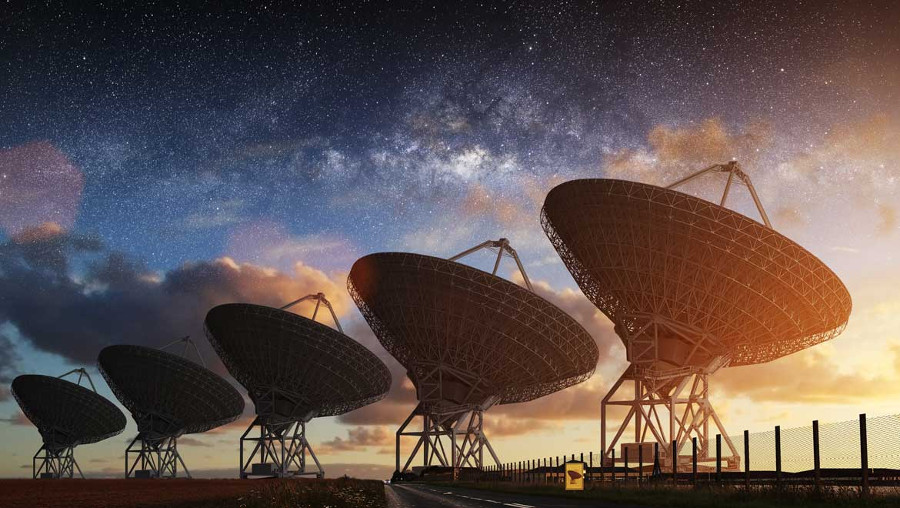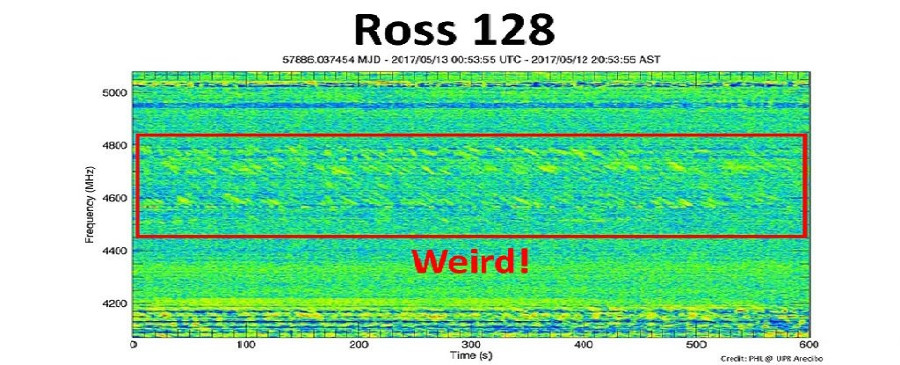Astronomers confirmed the strange radio signal that seemed to come from a small nearby star possibly came from satellites. Last week, the Planetary Habitability Laboratory at the University of Puerto Rico at Arecibo, issued a press release to announce strange signals picked up by the Arecibo radio telescope.
The astronomers said that on May 12, the 1,000-foot-wide (305 meters) radio telescope in Puerto Rico detected unusual radio signals coming from the red dwarf star Ross 128, located about 11 light years from our planet.

However, after further observations by the Arecibo telescope, the Green Bank Telescope in West Virginia and the Allen Telescope Array in California, researchers believe the radio signals came from geostationary satellites. Geostationary satellites orbit Earth at an altitude of 22,300 miles (35,800 kilometers).
Astronomers: Ross 128 odd radio signals didn’t come from extraterrestrial communications
The Planetary Habitability Laboratory team issued another statement on Friday, in which they list the probable causes for the radio signal, which they dubbed “Weird! Signal.” The researchers noted they got a lot of attention from the press upon their announcement, as some people thought the signals came from aliens.
However, the team proposed three main explanations for the source of the weird signals coming from Ross 128: unusual stellar activity, emissions from other background objects, or interference from satellite communications. They noted that many people were more interested in the signals as possible evidence of transmissions from an extraterrestrial civilization.
“Statistically, this is always the last consideration, not because such civilizations are impossible, we humans are an example, but because other possibilities had frequently arisen and no extraterrestrial civilizations have been detected yet,” Abel Mendez, director of the Planetary Habitability Laboratory at the University of Puerto Rico, wrote in the statement. “Nevertheless, scientists need to be open to all possibilities and explore them.”
Astrobiologists are tasked with finding extraterrestrial life. The Search for Extraterrestrial Intelligence (SETI) is a field for researching Astrobiology, in which researchers look for evidence of life on other planets. Several institutes are in charge of researching extraterrestrial life, such as the SETI Berkeley Research Center in California, and the SETI Institute, both of which are considered experts in the field.
Weird! Signal came from geostationary satellites orbiting Earth
The team noted that other radio signals have already been mistaken for extraterrestrial signals in the past. For instance, pulsars were originally referred to as Little Green Men (LGM), until scientists found they are fast rotating neutron stars. Short radio signals (peryton) detected at Parkes Observatory in Australia were later confirmed to be caused by a malfunctioning microwave oven, said Mendez.
However, astronomers have failed to identify the sources of some strange radio signals. For example, scientists recently detected a radio signal known as Fast Radio Bursts (FRB), which coincidently the Arecibo Observatory helped to confirm, but no source has been identified yet.
Mendez said that many of those unexplained signals are usually cited outside of academia to be proof of alien communications, but he added that “unexplained does not mean inexplicable.”

After follow-up observations, the team at the University of Puerto Rico suggested the Weird! Signal emanating from Ross 128 probably came from geostationary satellites.
“This explains why the signals were within the satellite’s frequencies and only appeared and persisted in Ross 128; the star is so close to the celestial equator where many geostationary satellites are placed,” said Mendez. “This fact, though, does not yet explain the strong dispersion-like features of the signals (diagonal lines in the figure).”
Mendez added that it could be possible that multiple reflections caused such distortions on the signal, but the team needs more time to explore that and other possibilities.
SETI Institute specialist believes scientists should pay attention to unexplained radio signals
Even if the Planetary Habitability Laboratory found a rational explanation for the Weird! Signal, Seth Shostak, a senior astronomer at the SETI Institute, said that scientists should still follow up on similar radio signals in the future.
“The historic lesson is clear – these things pop up, and you have to follow them up, because you never know what’s going to be the real one, or even if there will ever be a real one,” Shostak, who also studied Ross 128 in the Allen Telescope Array observations, told Space.com. “Following up is mandatory.”
The team at the University of Puerto Rico said it will now work with the Red Dots team, a group of researchers whose project’s task is to search for planets around nearby stars. They will study Barnard’s Star, another red dwarf star close to Ross 128.
Source: Planetary Habitability Laboratory
